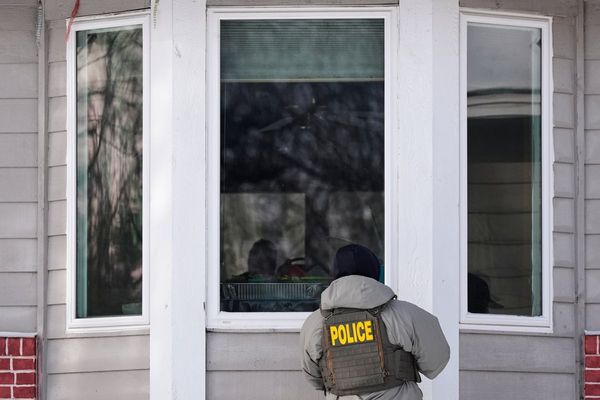
On Sunday, the controversial Supertech twin towers in Noida will become the country’s tallest structures to be demolished with a controlled blast. And for the 60-odd workers on the spot, including electricians, plumbers, riggers, blasters and helpers, it is a chance to feel proud by demonstrating their skills.
Located amid a thickly populated area in Sector 93A, the fate of the 103-metre-tall Apex and Ceyane towers was sealed by a Supreme Court order last year for flouting government regulations on construction. South African firm Jet Demolition and Mumbai-based Edifice Engineering eventually took up the task of safely pulling down the two structures.
Preparations for the demolition were underway when Newslaundry visited the site, with engineers and officials trying to ensure everything goes per plan, and the Uttar Pradesh police barring the entry of everyone except police and workers – by barricading nearly a 100-metre stretch leading to the towers. Beyond the barricades, journalists could be seen patrolling, camera crews in tow, looking for a comment from officials or a resident of the neighbouring residential society.
“It is a normal experience. I have done it before,” said Rajan, a 22-year-old who is among 10 Indian blasters – hired by the Edifice group – working under the guidance of seven personnel from the South African firm. Moving across the barricades to food stalls on the main road during lunchtime, he said his task involved installing explosives.
“Explosives are fitted in the pillars covered with black curtains. In every pillar, there are three holes especially drilled to embed 12 explosives…I went through 15 days of training in Rajasthan, where I was taught how to fit explosives safely. So I never got scared.”
Apex has 32 storeys while Ceyane has 29, and for the demolition, at least 9,642 holes have been drilled into both the towers to make space for 3,700 kg of explosives.
Mayur Mehta, Project Manager of Edifice Engineering, said that Indian blasters were hired “to help the South African group” but the “main task” is performed by the latter. While 400 workers toiled at the site when preparations for the demolition were at their peak, nearly 60 workers were operating ahead of the big day now, he said.
But there are many who are working on a project of such nature for the first time. Like the seven riggers from Punjab’s Gurdaspur, who have been camping in Delhi for the last five months, and are enthusiastic about their contribution to the task.
"Our work involves working on height. It was us who put all those clothes there in the columns and the floors,” said Salwinder Masih, a rigger, pointing to the columns covered with pieces of white and the pillars with black.
Nets, clothing and perimeter curtains are being put up at the site to protect the buildings nearby from the smoke, dust and debris.
“To cover one pillar with clothes requires at least two riggers. One at the top to hold the cloth and another to climb up or down using a safety harness to fix it,” said Balbinder*. “We are used to heights...Punjabis are doing the most daring job here…dar ke aage jeet hai,” said another. “There is victory beyond fear.”
Most workers Newslaundry met said they were proud of the work they were doing.
For Saeed Khan, an electrician from Bihar, it is the second demolition project in his 10-year career, but “taller than the previous”. “I am happy because I would be able to demonstrate the skill that I have as an electrician.”
However, for Pramod Kumar, a plumber, it is not like there is no fear at all, “but there is money too”. Kumar is tasked with ensuring the availability of water. Why? “Water is important as it is used in the core drilling process to make holes to place the explosives. I had to ensure it was available on whichever floor required.”
The blast will leave behind nearly 80,000 metric tonnes of debris, of which nearly 50,000 MT will be used to level the ground while the rest will be moved out, Mehta said. “This whole process will take at least 90 days during which over a 100 workers will be deployed to carry out the task.”
*Some of the workers did not want to be named in this report. Their names have been changed.
Newslaundry is a reader-supported, ad-free, independent news outlet based out of New Delhi. Support their journalism, here.







